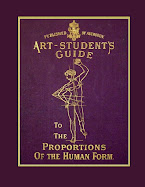 Johann Georg Heck
Johann Georg HeckFig. 1, superficial muscles of the head from the left side: 1, epicranial aponeurosis; 2,3, occipito-frontalis, anterior portion; 4, posterior portion, the two connected by the epicranial aponeurosis ; 5, attollens aurem; 6, retrahens aurem ; 7, attrahens aurem ; 8, orbicularis palpebrarum; 9, compressor naris; 10, levator labii superioris alaeque nasi ; 11, levator labii superioris; 12, zygomaticus minor; 13, zygomaticus major; 14, levator anguli oris; 15, depressor anguli oris; 16, depressor labii inferioris; 17, levator menti ; 18, orbicularis oris ; 19, buccinator ; 20, masseter. Fig. 2, deep-seated muscles of the head from the left side: 1, temporal muscle; 2, corrugator supercilii; 3, superior oblique muscle of the eye; 4, levator palpebrae; 5, compressor naris ; 6, depressor naris ; 7, orbicularis ; 8, levator anguli oris ; 9, depressor labii inferioris; 10, buccinator. Fig. 3.1, platysma myoides; 2, musculus risorius santorini, 3, sterno-celido-mastoid; 4, trapezius; Fig. 4.1,2, digastric muscle; Fig. 9. 1, pectoralis major; 2, pectoralis minor; 3, subclavius; 4, serratus magnus; 5, intercostals; Fig. 10.1,2,3, obliquus internus; Fig. 11.1, muscular portion of the diaphragm; Fig. 12.1, supra spinatus; 2, infra spinatus; 3, teres minor; 4, teres major; Fig. 13.1, subscapularis, 2, biceps; Fig. 14.1, tendon of the triceps; 2, brachialis internus; Fig. 15.1, deltoid; 2, common tendon of the triceps; 3,4,5, the long, the external and the internal portions; 6, anconaeus;
Johann Georg Heck
Fig. 1-1, serratus posticus superior; 1-2. serratus posticus inferior ; 1-3. orsal aponeurosis; 1-4. splenius capitis; 1-5,6. sacro-spinalis; 1-7. cervicalis ascendens ; 1-8. trachelo-mastoid ; 1-9. semi-spinalis dorsi et colli ; 1-10. complexus; 1-11. spinalis dorsi et colli. 2-1. splenius capitis; 2-2. splenius colli; 2-3,5. complexus; 2-4., trachelo mastoid. 3-1. complexus; 3-2. trachelo-mastoid; 3-3. minor, 3-4. major rectus capitis posticus; 3-5. obliquus capitis, inferior and superior. Fig. 4-1. pronator teres; 4-2. flexor carpi radialis; 4-3. palmaris longus; 4-4. flexor carpi ulnaris; 4-5. supinator longus; 4-6. flexor digitorum communis. Fig. 5-1. flexor digitorum communis sublimis; 5-2. slit for the passage of the flexor profundus; 5-3. supinator longus: 5-4. lower part of the brachialis internus; 5-5. tendon of the biceps; 5-6. palmar ligament. Fig. 6-1. flexor communis digitorum profundus; 6-2,3. flexor pollicis longus; 6-4. pronator quadratus; 6-5,6. supinator longus et brevis. Fig. 7-1. extensor digitorum communis; 7-2. extensor digiti minimi; 7-3. extensor carpi ulnaris; 7-4. anconoeus; 7-5. extensor carpi radialis longus et brevis; 7-6. annular ligament. Fig. 8-1. supinator brevis; 8-2. anconoeus reflected; 8-3. abductor longus pollicis ; 8-4. extensor pollicis brevis ; 8-5. extensor pollicis longus; 8-6. extensor indicis. Fig. 9-1. tendon of the extensor pollicis longus; 9-2. tendon of the palmaris longus; 9-3. tendon of the flexor carpi ulnaris; 9-4. abductor pollicis brevis; 9-5. opponens pollicis; 9-6. flexor pollicis brevis ; 9-7. abductor pollicis; 9-8. palmaris brevis; 9-9. abductor digiti minimi; 9-10. flexor brevis digiti minimi ; 9-11. opponens digiti minimi; 9-12. internal interosseous muscle.
Fig. 10-1,2,3. external interosseons muscles. 11-1. glutaeus maximus; 11-2. glutaeus meclius. Fig. 12-1. glutaeus medius; 12-2. pyriformis; 12-3. tendon of the obturator internus; 12-4. quadratus femoris; 12-5. section of the tendon of the glutaeus maximus. Fig. 13-1. section of the pyriformis; 13-2. glutaeus minimus; 13-3. obturator mternus; 13-4. quadratus femoris; 13-5. adductor femoris; 13-6. biceps flexor cruris; 13-7. semi-tendinosus; 13-8. semi-membranosus. Fig. 14-1. psoas magnus, 14-2. iliacus internus (both in section); 14-3. sartorius; 14-4. tensor vaginae femoris; 14-5. rectus ; 14-6. vastus extern us ; 14-7. pectinaeus ; 14-8. adductor longus; 14-9. gracilis. Fig. 15-1. the four extensors of the leg, the rectus supposed to be cut off: 15-2. adductor brevis; 15-3. adductor magnus; 15-4. obturator externus. Fig. 16-1. tibialis anticus; 16-2. extensor pollicis longus; 16-3. extensor digitorum commums; 16-4,9. peronaeus longns; 16-5,8. peronaeus brevis; 16-6. extensol communis brevis; 16-3,7. peronaeus tertius; 16-10. annular ligament on the back of the foot. Fig. 17-1. flexor digitorum brevis; 17-2. abductor pollicis; 17-3. flexor pollicis brevis; 17-4. abductor digiti minimi; 17-5. flexor brevis digiti minimi. Fig. 18-1. flexor pollicis brevis; 18-2. adductor pollicis; 18-3. transversalis plantaris; 18-4. tendon of the peronaeus longus. Fig. 19 interosseous muscles of the back of the foot.
John Lizars
Human Skull - Der Schaedel des Menschen. A copy is for sale on Ebay Click here to see it for sale on Ebay













































